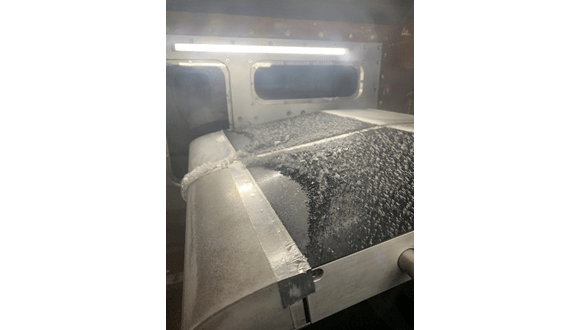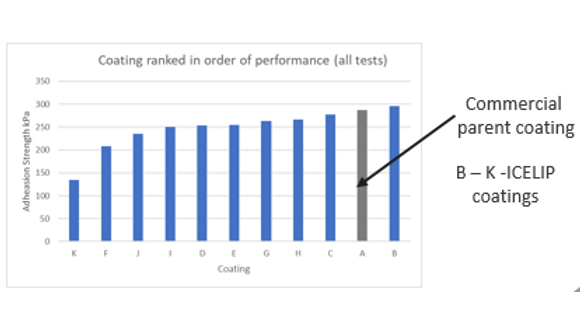Mon, 07 June, 2021
Icing represents a complex and expensive problem in different transportation and energy applications, including aircraft, wind turbines, and power lines. Ice contamination on aircraft specifically is a multifaceted problem with repercussions on safety, efficiency, costs, and the environment. In-flight ice accumulation causes airflow disruption and decreasing control and performance. Large pieces of ice separating during flight can cause problems to engines and impact propellers, additionally, frozen contaminants can jam control surfaces. Icing is a major cause of delays, incidents (2.1% of total incidents), and severe accidents (4% of fatal accidents). The next generation of aircraft targets are to reduce drag by 20%, fuel consumption by 4%, and CO2 emissions. A clean and smooth wing surface is essential for natural laminar flow (NLF) and reaching those targets.
Current ice-mitigation technologies in flight include mechanical breaking, electrical heating, freezing point depressant fluid and air bleed systems. De-icing systems can add up to 5% of aircraft weight. This increases fuel consumption, costs, and CO2 emissions by 4% and creates potential failure points. De-icing fluids are also used on the ground to remove ice from aircraft prior to take-off, with operations costing over £10,000 per large aircraft and consuming up to 1500 litres of fluid. Waste should be collected to prevent pollution and meet environmental regulations, as de-icing fluids increase aquatic toxicity and biochemical oxygen demand in waters.
 Figure 1. (Courtesy of CAV-Advanced Technologies)
Figure 1. (Courtesy of CAV-Advanced Technologies)
The use of passive anti-icing technologies, such as ice-phobic coatings, would dramatically reduce these problems. Despite the presence of different ongoing research studies and a few commercial products, no ice-repellent coating has yet been shown to provide a high degree of durability, particularly for the aerospace industry. The innovative aspect of the ICELIP solution is to provide standard aerospace coating systems with dual functionalities. This will be achieved by using ice-repellent multi-functionalised silica nanoparticles bonded strongly to a standard polyurethane clear coat already used in the aerospace sector. The focus of the innovation is the optimisation of a coating technology developed previously by the partners. Recent tests of a number of coating formulations and some emerging commercially available products have shown significantly lower levels of ice adhesion compared to a conventional polyurethane clear topcoat. This complements the findings from ice wind tunnel trials, which also show some of these low adhesion coatings have reduced ice build-up that is easier to remove. Progression towards passive, durable, and highly ice-repellent surfaces provides immediate opportunities for implementation, as it is designed to be seamlessly integrated into currently used materials. ICELIP technology could also be used in other sectors affected by icing, e.g. other transport (rail, maritime, automotive) and energy (wind turbines, power lines).
 Figure 2. The adhesion of ice is reduced by the use of ICELIP coatings delaying ice accretion (Courtesy of CAV-Advanced Technologies)
Figure 2. The adhesion of ice is reduced by the use of ICELIP coatings delaying ice accretion (Courtesy of CAV-Advanced Technologies)
The ICELIP project (of which Icemart® is the commercial brand) will help to revolutionise the issue of icing.
Keep up to date on all things Icemart®:
LinkedIn: https://www.linkedin.com/company/icemart/
Twitter: @Icemart2
Or contact the ICELIP project Exploitation Manager David Hannan at Opus Materials Technologies dhannan@opusmaterials.com